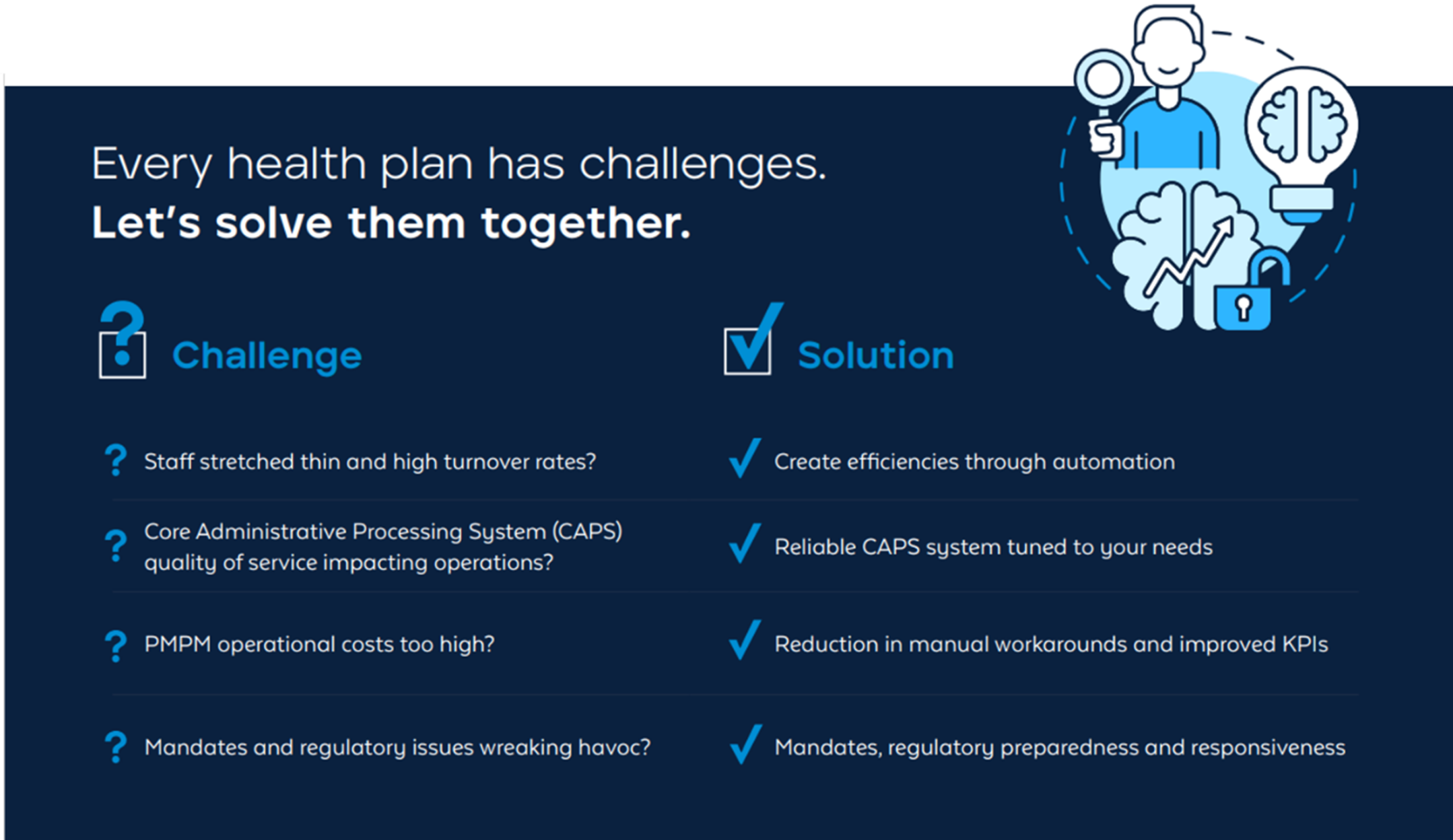The pace of change in healthcare has accelerated at record speeds in recent years. Many health plan CIOs are struggling to help their businesses adapt quickly due to their dependencies on legacy care management systems that were built on outdated technology platforms.
As a result, there is a growing level of frustration among business, clinical and technical leaders alike, and therefore a growing number of payers looking to upgrade their care management capabilities. To help CIOs better understand and prioritize evaluation criteria, Gartner recently issued a report entitled, “Market Guide for U.S. Healthcare Payer Care Management Workflow Applications.”
The report stresses the urgency by which health plan CIOs should consider new, more modern care management software solutions. In fact, the Market Guide states, “The care management function is one of the few remaining levers available to a payer organization to impact its most important KPIs (namely top-line revenue, medical costs, quality measure improvement and operational efficiency).”
But with so many options and considerations to make, how should CIOs go about evaluating care management software solutions? Below are three of the most important criteria every CIO should consider.
Interoperability with Other Systems
As the role of the traditional care management function continues to expand, care managers are being asked to support a wide variety of business and care delivery models that depend on coordination with a non-traditional service providers, such as home-based care, community services, and behavioral health specialists.
To support this evolving role, technical leaders are being asked to implement a wide variety of systems, which has led to complex infrastructures, massive data silos, and frustrated care managers.
The importance of having a highly interoperable care management platform that works seamlessly with virtually any third-party system cannot be understated. Interoperable systems with advanced APIs that require minimal IT overhead is no longer a nice-to-have – it is a must have. No single care management system can address all of the unique needs and care management goals of each payer so CIOs must place interoperability and the seamless exchange of data, whether it be structured or unstructured, as a top criterion.
Regulatory Compliance
For health plans, keeping up with the rapidly changing regulatory environment is one challenge, but making sure an organization’s care management platform and workflows can also be adapted to keep up is a whole different ballgame. Traditional systems often require significant IT involvement and complex rewiring of workflows to prepare for and implement regulatory changes. Some changes can take months and mountains of manual resources to implement in a traditional care management system. And with the pace of change ever-increasing, it’s often too late for system changes and payers end up building manual-intensive workarounds that cost time and money.
This is especially true for health plans serving government populations, where each state can have its own set of rules. And with the rapid growth in Medicare Advantage plans, Managed Medicaid programs, and self-funded employer plans, health plan CIOs must have a modern, agile care management software solutions that facilitates rapid change to meet regulatory requirements such as Medicare Advantage plan proposed changes or Medicaid state plan amendments.
In addition to a highly flexible platform, CIOs should look for care management vendors who have proven expertise in the government space. With seasoned experts on hand to translate business and technical decisions into clinical workflows that enable upholding compliance, payers can be confident in their ability to meet regulatory guidelines and even turn regulatory efforts into competitive advantages.
Health Equity & Social Determinants of Health (SDOH)
As the popularity of value-based pricing and risk-sharing arrangements reaches new heights this year, care managers are being forced to take a more holistic view of their members’ health, which includes social factors and community services that can have a profound impact on a member’s ability to access care and adhere to treatment plans.
Things like lack of transportation, limited access to healthy foods, and financial insecurities must be considered when building successful care plans. Community services and local groups must be incorporated into the care team, and as a result, care management solutions must accommodate for these non-traditional service providers and the SDOH data they can provide.
Connecting members with resources available in their community plays a critical role in improving member outcomes and satisfaction levels while also reducing care delivery costs – especially if the care management system can accommodate the data and resources.
Making the Move to Modern Care Management Software Solutions
In the 2023 Gartner Market Guide, HealthEdge was recognized as a Representative Vendor for GuidingCare in the care management solutions market.
Known for its robust API network, expansive ecosystem of pre-built integrations, custom configurations, and advanced analytic capabilities, GuidingCare and its team of regulatory and clinical experts check all of the main boxes industry analysts recommend to payers looking to meet the demand for more comprehensive, whole-person member care management of the future.
Learn more about GuidingCare on the HealthEdge website or email us at [email protected].
Gartner, Market Guide for U.S. Healthcare Payer Care Management Workflow Applications, Jeff Cribbs, Amanda Dall’Occhio, 3 January 2023.
GARTNER is a registered trademark and service mark of Gartner, Inc. and/or its affiliates in the U.S. and internationally and is used herein with permission. All rights reserved.
Gartner does not endorse any vendor, product or service depicted in its research publications, and does not advise technology users to select only those vendors with the highest ratings or other designation. Gartner research publications consist of the opinions of Gartner’s research organization and should not be construed as statements of fact. Gartner disclaims all warranties, expressed or implied, with respect to this research, including any warranties of merchantability or fitness for a particular purpose.








